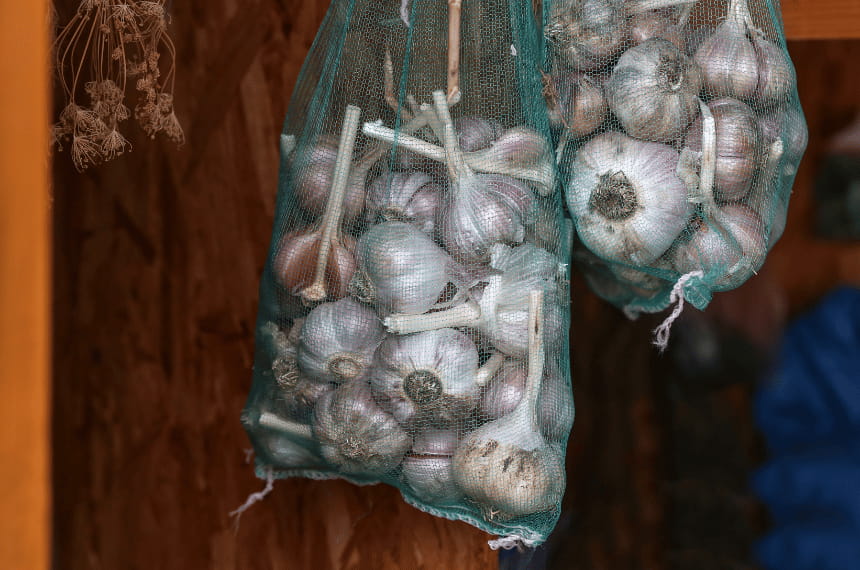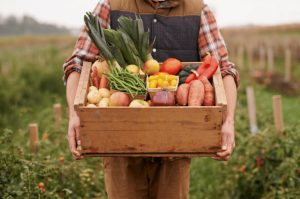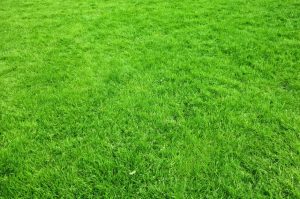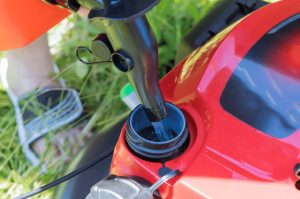In the picturesque landscapes of Tasmania, garlic isn’t just a plant; it’s a testament to our rich agricultural heritage.
As seasoned gardeners, we’ve seen the joy and pride in cultivating garlic in our own backyards, making it more than just a crop but a cherished tradition in our local communities. Join us as we delve into the nuances of growing garlic in Tasmania’s unique climate.
Understanding Tasmania’s climate for growing garlic
Tasmania, often dubbed the “Apple Isle”, boasts a climate distinct from the rest of Australia. We’ve always said at Yard Work that understanding this climate is the key to successful gardening here. Tasmania experiences a temperate maritime climate characterised by mild temperatures and consistent rainfall. Summers are pleasantly warm, with temperatures ranging between 17°C to 23°C, while winters can be cool, dropping to a range of 3°C to 11°C.
Rainfall is evenly distributed throughout the year, ensuring our soils remain moist – a boon for crops like garlic. Seasonal changes, especially the transition from winter to spring, play a pivotal role in determining when to plant. This unique blend of temperature and rainfall creates an environment where garlic can thrive.
For more insights on what to plant in Tasmania’s distinct climate, check out our guide on what veggies to plant now in Tasmania.
Garlic varieties suited to Tasmanian weather
Tasmania’s unique climate offers a haven for several garlic varieties. Here are some of the standout types that we find thrive in Tasmania:
- Tasmanian Purple: A local favourite, this hardneck variety boasts a vibrant purple hue. Its cloves are large and easy to peel, making it a popular choice for culinary enthusiasts. The flavour is robust, with a hint of sweetness, perfect for roasts and stir-fries.
- Monaro Red: Originating from the cold regions of New South Wales, this hardneck garlic is well-suited to Tasmania’s climate. It has a strong and spicy flavour, making it ideal for dishes that require a garlic punch.
- Dunganski: A hardneck variety known for its striking purple stripes. It offers a balanced flavour profile, which is neither mild nor strong, making it versatile in the kitchen.
- White Crookneck: This softneck garlic is a resilient variety that can handle Tasmania’s occasional cold snaps. It has a milder flavour, perfect for those who prefer their garlic not to be overpowering.
- Rojo de Castro: A hardneck variety with a rich history tracing its origins back to Spain. It’s known for its deep red cloves and a flavour profile that’s both spicy and sweet.
Each of these garlic varieties brings its own set of characteristics and benefits to the table. For a deeper dive into garlic varieties and their cultivation, we recommend checking out resources from Tasmanian Gourmet Garlic. Their expertise has been invaluable in our own gardening journey.

When to plant garlic in Tasmania?
The best time to plant garlic in Tasmania is from March to May. This period ensures the soil temperature is optimal and the climatic conditions are conducive for the garlic bulbs to establish roots before the winter chill sets in.
Planting during this window allows the garlic to experience the cold it needs to form bulbs, and as the days lengthen in spring, the bulbs start to grow in size. For more insights on planting times in different regions, explore our guide on when to plant garlic in Sydney.
Growing garlic in Tasmania
Growing garlic in Tasmania is both an art and a science. It’s not just about planting a bulb and hoping for the best; it’s about understanding the soil, the climate, and the unique needs of the garlic variety.
When done right, the rewards are bountiful, offering a harvest rich in flavour and steeped in local tradition.
Laying the groundwork: soil preparation
When discussing laying the groundwork for garlic in Tasmania, we’re delving into the heart of successful gardening.
Soil testing is paramount. It gives us a snapshot of the soil’s health, revealing nutrient levels and potential deficiencies.
The pH balance of the soil can make or break your garlic crop. Garlic thrives in soil with a pH level between 6.0 to 7.5. If the soil is too acidic or alkaline, it can hinder nutrient absorption, affecting the growth and health of the garlic.
However, it doesn’t stop there. Enriching the soil with organic matter, like compost or well-rotted manure, improves its structure, making it more brittle and enhancing its water retention capabilities. And let’s not forget fertilisers. They’re like the vitamins for our soil, providing essential nutrients that boost garlic growth.
In our experience, taking the time to prepare the soil sets the stage for a bountiful harvest. It’s a labour of love, but the results? Absolutely worth it.
Preparing garlic for planting
Planting garlic isn’t as simple as sticking a bulb into the ground.
Preparing garlic for planting is a crucial step that can significantly impact the quality and yield of your crop. Here are some top insider tips to ensure you get the headstart on your garlic growing adventure:
- Selecting quality bulbs: Begin with healthy, disease-free bulbs. Look for plump bulbs, firm and free from any signs of mould or rot. Remember, the quality of the bulb you plant determines the quality of the garlic you harvest.
- Breaking apart the bulbs: Break the garlic bulb into cloves about a day before planting. Be gentle to ensure you don’t damage the base of the cloves, as this is where the roots will emerge.
- Soaking the cloves: Some gardeners swear by soaking garlic cloves in water, baking soda, and liquid seaweed for a few hours before planting. This can help prevent fungal diseases and give the cloves a nutrient boost.
- Choosing the best cloves: Not all cloves are created equal. Opt for the larger outer cloves for planting, as they produce bigger bulbs. The smaller inner cloves can be used in the kitchen.
- Pointy end up: When planting, ensure the pointy end of the clove is facing up. This is where the green shoot will emerge. The flat end, where the roots grow, should be facing down.
Taking the time to prepare your garlic cloves for planting might seem like a small step, but these little details can make all the difference. Over the years, we’ve seen that some preparation goes a long way in ensuring a successful garlic harvest.
Best practices when planting garlic
Planting garlic might seem straightforward, but as we’ve discovered at Yard Work, there’s an art to it. Drawing from our experiences, here’s a step-by-step guide to ensure your garlic gets the best start:
- Choose the right spot: Garlic prefers a sunny location with well-draining soil. Ensure the chosen spot receives at least 6-8 hours of direct sunlight daily.
- Prepare the soil: Till the soil to a depth of about 20-30 centimetres, removing any weeds or stones. This ensures the garlic roots can penetrate the soil easily.
- Lay out your cloves: Before planting, lay out your prepared garlic cloves on the soil surface to determine the best spacing.
- Planting depth: Dig a hole about 5-7 centimetres deep. This depth ensures the garlic is protected from temperature extremes but can still easily sprout.
- Orientation: Place the garlic clove in the hole with the pointy end facing up and the flat end (where the roots grow) facing down.
- Spacing: Space each clove about 15-20 centimetres apart. This gives each plant enough room to grow without competing for nutrients.
- Cover and water: Gently cover the cloves with soil and water them well. This initial watering helps settle the soil around the cloves and ensures they have the moisture they need to start growing.
- Mulching: Apply a layer of organic mulch, like straw or hay, around the planted area. This helps retain soil moisture, suppress weeds, and regulate soil temperature.
Planting garlic is just the beginning of the journey. While we’ve highlighted the optimal months for planting in Tasmania, it’s essential to remember that garlic is a commitment. This long-term crop requires patience, often maturing over several months. In the early stages after planting, consistent moisture is crucial.
Ensure the soil is damp but not waterlogged. As your garlic plants establish themselves, you can gradually reduce the watering frequency. Consider nourishing your plants with a balanced, organic fertiliser about a month into the growth. This timely boost can make all the difference, setting the stage for a bountiful harvest!
Companion plants for garlic in Tasmania

In Tasmania, garlic has some fantastic companions that thrive alongside it and offer mutual benefits. Drawing from insights at Ultimate Backyard, here are some standout companion plants for garlic:
- Tomatoes: A classic companion for garlic. Garlic helps repel red spider mites, a common pest for tomatoes. In return, tomatoes deter aphids, which can sometimes bother garlic.
- Roses: It might surprise some, but roses and garlic make a great pair. Garlic helps deter aphids, a common rose pest, ensuring your roses stay pristine.
- Carrots: Garlic helps repel carrot root flies, ensuring your carrot crop remains healthy and robust.
- Beets: These root vegetables benefit from garlic’s ability to deter various pests, ensuring a bountiful beet harvest.
- Lettuce: Garlic is a deterrent for aphids and other pests that often target lettuce, ensuring your greens remain crisp and fresh.
- Spinach: Like lettuce, spinach benefits from garlic’s protective nature against common pests.
The beauty of companion planting lies in its symbiotic relationships. Plants coexist and thrive together, offering protection, enhancing growth, and improving flavour. It’s a testament to nature’s incredible interconnectedness. In Tasmania, with our unique climate, it’s a practice that can yield truly remarkable results.
Care and maintenance of your crop
We’ve always believed that the love and effort you pour into your garden are directly reflected in the quality of your harvest. Here are some essential care and maintenance tips to ensure a healthy garlic crop:
- Watering: Garlic has moderate water needs. In the initial growth phase, keeping the soil consistently moist is crucial. However, as the bulbs start to form, reduce the watering frequency. Over-watering during this phase can lead to bulb rot. Always aim for deep, infrequent watering rather than shallow, frequent sessions.
- Fertilising: Garlic is a heavy feeder, especially during its active growth phase. A month after planting, start feeding your garlic with a balanced, organic fertiliser every 3-4 weeks. This ensures the plants receive the necessary nutrients to produce large, flavourful bulbs.
- Weed Management: Weeds can compete with garlic for nutrients and space. Regularly check your garlic beds and remove any weeds. This ensures your garlic has room to grow and reduces the risk of pests and diseases.
- Mulching: A layer of organic mulch, like straw or hay, can be beneficial. It helps retain soil moisture, suppresses weed growth, and regulates soil temperature. However, avoid over-mulching, as excessive moisture can lead to bulb rot.
- Regular Inspection: Keep an eye on your garlic plants. Regularly inspect them for signs of pests or diseases. Early detection and intervention can prevent minor issues from becoming major problems.
In our years of gardening, we’ve learned that care and maintenance are ongoing processes. It’s about building a relationship with your plants, understanding their needs, and responding accordingly. With the right care, your garlic crop in Tasmania can flourish, offering a bountiful and flavourful harvest.
Common pests and diseases
Garlic, while a robust plant, isn’t immune to pests and diseases, especially in Tasmania’s unique climate. Over the years at Yard Work, and with insights from Gardening Australia, we’ve identified some common challenges garlic growers might face. Here’s a rundown of these issues and how to tackle them:
- Aphids: These tiny insects can cluster on young garlic shoots, sucking the sap and weakening the plant. To prevent this, introduce beneficial insects like ladybugs and lacewings that feed on aphids. Regularly spraying garlic plants with a mild, soapy water solution can deter these pests.
- White Rot: A soil-borne fungus that affects the roots, causing the garlic bulbs to rot. To avoid white rot, ensure good soil drainage and avoid over-watering. Crop rotation is essential; avoid planting garlic in the same spot year after year.
- Thrips: Tiny insects that feed on garlic leaves, leading to a silvery appearance on the foliage. Regularly spray garlic plants with neem oil or insecticidal soap when protecting your garlic. Encourage natural predators like ladybugs in your garden.
- Rust: A fungal disease that causes orange spots on garlic leaves. Ensure adequate spacing between garlic plants for proper air circulation to prevent rust. Remove and dispose of affected leaves. Avoid overhead watering.
- Nematodes: Microscopic worms that can damage garlic roots. Regarding nematodes, practice crop rotation and consider planting marigolds known to deter nematodes as companion plants.
- Bulb Rot: Caused by various fungi, it leads to the decay of the garlic bulb. To prevent bulb rot, ensure the soil has good drainage. Plant garlic cloves with the pointy end to prevent water from collecting at the base.
Being proactive is the key. Regularly inspecting your garlic plants, understanding the signs of pests and diseases, and taking preventive measures can ensure a healthy and bountiful harvest. Remember, a little vigilance goes a long way in ensuring your garlic thrives.
When and how to harvest garlic
The moment of harvesting garlic is a culmination of months of care, and knowing the precise time to do so is crucial.
As the lower leaves of the garlic plant begin to turn brown while the top ones remain vibrantly green, it’s a clear sign that harvest time is approaching. When about one-third of the leaves have been browned, the garlic gives us the green light.
Additionally, by gently brushing away some soil at the base of the stem, you can feel the bulb. A plump, well-formed bulb indicates maturity. And for those garlic varieties that produce flower stalks or ‘scapes’, their growth can be a telltale sign.

When these scapes start to stand tall and uncurl, it’s a nudge from nature that the garlic is ready to be harvested. Now, onto the harvesting methodology:
- Gentle digging: Avoid pulling the garlic out by the stem. Instead, use a fork or spade to carefully loosen the soil around the bulb and lift it out.
- Handle with care: Freshly harvested garlic is delicate. Handle them with care to prevent any damage.
- Shake Off excess soil: Gently shake off any clinging soil. It’s best not to wash the bulbs immediately, as moisture can lead to rot during storage.
- Curing: Lay the harvested bulbs in a well-ventilated, shady spot for about two weeks. This curing process helps the garlic dry and extends its shelf life.
- Trimming: Once cured, trim off the roots and cut the stalks about an inch above the bulb.
With the right timing and methods, your garlic harvest will testify to your dedication and care over the past months.
Garlic storage tips for Tasmania
Storing garlic, especially in Tasmania’s unique climate, requires combining traditional wisdom and practical know-how. After the joy of harvesting comes the responsibility of ensuring the garlic’s longevity so you can enjoy its flavour for months.
Begin with proper curing, which is essential for preparing garlic for storage. Lay out the harvested bulbs in a well-ventilated area, away from direct sunlight, for about two weeks. This drying process enhances the garlic’s flavour and prevents mould and rot.
Once cured, trim the roots and cut the stalks, leaving about an inch above the bulb. For storage, choose a cool, dry place. Mesh bags or woven baskets are ideal for good air circulation.

Additionally, avoid storing garlic in plastic bags or containers, as they can trap moisture and lead to rot. If you notice any bulbs starting to sprout, use them up first. While garlic can be stored for several months, regularly checking your stash ensures you remove any bulbs that might be going bad, ensuring the rest remain in prime condition!
Key takeaways
Growing garlic in Tasmania is a journey filled with nuances and rewards. Our unique climate offers an ideal backdrop for several garlic varieties, from the robust Tasmanian Purple to the spicy Monaro Red.
The key to a bountiful harvest lies in understanding our local conditions:
- The importance of soil preparation.
- The art of companion planting.
- The vigilance required to fend off pests and diseases.
Harvesting is a delicate dance of timing and technique, ensuring each bulb reaches its full potential. Once harvested, the care continues, with proper storage techniques ensuring longevity. But beyond the practicalities, growing garlic in Tasmania is about connecting with the land, embracing its challenges, and reaping the rewards of patience and care.
For more insights into cultivating crops in Tasmania, explore our guide on growing potatoes in Tasmania.
FAQs
What nutrient does garlic need the most?
Garlic primarily requires nitrogen for healthy growth, especially during its early stages, to support leaf development.
What is the best fertiliser for garlic in Australia?
In Australia, a balanced, organic fertiliser with a mix of nitrogen, phosphorus, and potassium is ideal for garlic.
Why should you soak garlic cloves before planting?
Soaking garlic cloves before planting can help prevent fungal diseases and give the cloves a nutrient boost for better germination.
Should you keep garlic cloves in the fridge before planting?
Yes, chilling garlic cloves in the fridge for a few weeks before planting can improve germination, especially in warmer climates.
Is Seasol good for garlic?
Yes, Seasol benefits garlic as it promotes root development and overall plant health.
Is blood and Bone good for garlic?
Blood and Bone is a rich organic fertiliser that provides essential nutrients and benefits garlic growth.
Is Dynamic Lifter good for garlic?
Yes, Dynamic Lifter, rich in organic matter, is excellent for garlic, providing slow-release nutrients.
Is Epsom salt good for garlic?
Epsom salt can benefit garlic by providing magnesium, which aids chlorophyll production and overall plant health.
Is potash good for garlic?
Yes, potash benefits garlic as it promotes bulb development and improves disease resistance.






